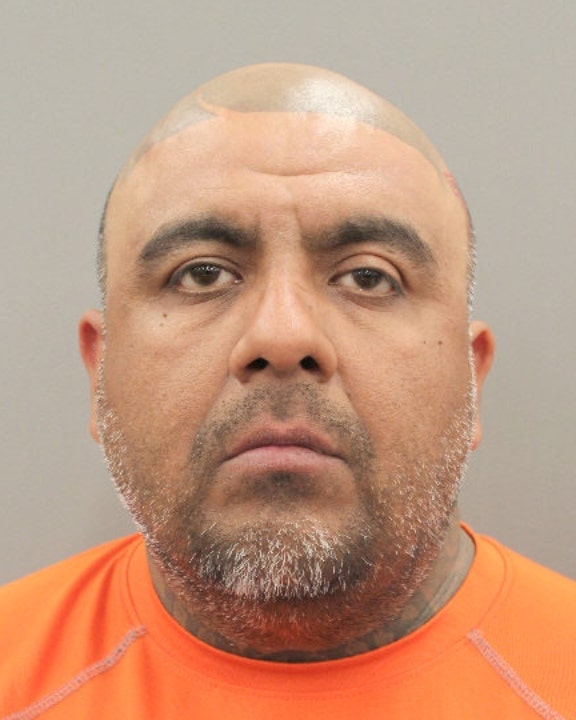
At first, Wanda Cotton searched the water.
She crossed the railroad tracks and scrambled down the banks of the Licking River, calling out the name of her teenage son, Randy, who went to the county fair one night and never came home.
Mrs. Cotton, two inches shy of 5 feet tall and unable to swim, would return covered in mud and scratches. It got so when the neighbors saw her coming, they went inside.
Randy Sellers was missing for weeks, then years, then decades. For Mrs. Cotton, the steep slopes of the river running past her home in Kenton County, Ky., were replaced by even more treacherous terrain: unresolved grief, and unanswered questions about two police officers who were with Randy that night.
He vanished in 1980, the year before the disappearance of 6-year-old Adam Walsh in Florida would change the way America looked at missing children. Adam’s father, John Walsh, became a household name and a beacon for parents like Mrs. Cotton, who felt alone and ignored by the authorities.
Mrs. Cotton met Mr. Walsh and joined an emerging movement of families whose advocacy led to the first databases of missing children, the appearance of lost children’s photos on milk cartons and mailers, and a federal law requiring the F.B.I. to step in if parents asked.
“Since my son’s disappearance I have made missing children my life,” Mrs. Cotton told a congressional subcommittee in 1985. “I feel the word ‘missing’ is part of my name.” Mrs. Cotton gave comfort and advice to other families dealing with missing children. But the one question she could never answer was her own: What happened to Randy?
From the morning his parents reported Randy missing, the police seemed to be two steps behind. Yet, the last people known to have seen him alive were two officers who were supposed to take Randy home after he got drunk at the fair.
In the years that followed, the investigation would take vertiginous twists and turns. There was a neighbor who turned out to be a child molester and a drifter who professed to be a serial killer, a psychic nurse who said she knew where Randy’s body was buried and a Naval officer who claimed he could detect magnetic currents surrounding corpses. About once a decade, a new detective has reopened the file to pursue a new lead.
Yet, no trace of Randy has ever been found, and no one has ever managed to quiet the suspicions Mrs. Cotton has about the officers who were with Randy that night.
Now 77, she lives in an assisted living facility. Her younger son, Tyran, died decades ago. Her husband, John, died of cancer in February 2023.
“God left me here for a reason,” she said. “To find Randy — or to let whoever did something to him know that, no, I’m not going to let it be forgotten.”
***
On the Saturday night he disappeared, Randy Sellers was ready to party. He wore a Led Zeppelin T-shirt and his hair fell in a cascade that girls found alluring. Meeting up with friends at the fair, he flashed a $50 bill he had just been paid for a roofing job, and proceeded to share a pint of whiskey, smoke pot and wash some quaaludes down with Coca-Cola, a friend later recounted in an affidavit. Eventually, witnesses said, he could not stand up.
The police took Randy to their on-site trailer, where they determined that he was 17 — a minor — and looked for someone who could take him home.
Security at the fair was provided by volunteer officers from the Kenton County Police Reserve. Eventually, the reserve officer in charge that night, Sgt. Robert Wehner, decided to drive Randy home himself.
Randy was known to the county police as a hell raiser. He had been to juvenile detention and, more recently, been hospitalized for drug use, according to deposition transcripts. Sergeant Wehner was told by a supervisor that if Randy caused any problems, he should be taken to jail, according to a transcript of the police radio communications that night.
Friends and family later said Randy knew that coming home to his mother and stepfather wasted was going to get him in trouble at a hopeful time, when he had earned his G.E.D. and was planning to become an ironworker like his stepfather.
As the patrol car neared the country road where Randy’s family lived, he suddenly “came over the seat,” Sergeant Wehner later wrote in his report, striking the officer in the forehead and grabbing him around the neck.
Sergeant Wehner called for backup, and Randy was transferred to the patrol car of Jay Seifried, a full-fledged officer who had been on the force for eight years. But Randy refused to point out his house, the officers said.
Finally, the two patrol cars pulled over near a railway overpass in the tiny town of Visalia and let him out, the officers said in their reports. He was about a half mile from his family’s house.
On Sunday morning, after hearing from neighbors who were at the fair, the Cottons called the police, who said that Randy was not in custody. They called hospitals, friends and relatives. No one had seen him.
It was an era before dashboard cameras, body cameras or cellphones could have provided clues. All the Cottons had was a handwritten note from Randy saying he had gone to the fair.
That Monday, the police told the family that officers had dropped Randy off without taking him home.
“The young man was to turn 18 in two weeks, it was not yet 10 p.m., and I felt there was absolutely no danger in releasing him in a familiar neighborhood,” Officer Seifried wrote in a summary of the episode for his supervisors.
A search was launched on Monday, but the Cottons felt that it lacked urgency. That afternoon, a county police official requested help from a water rescue team from neighboring Boone County, according to a call log. After being told there would be a charge, the Kenton official replied, “If there’s a fee, just forget it,” according to the call log. When the Cottons found out, they protested and the water rescue team was brought in the next day to search the Licking River.
Two weeks later, an officer thought he spotted Randy in the back seat of a Mustang but lost the car in traffic.
The Cottons, for their part, jumped on every lead. They called the police when they spotted buzzards at a nearby dump. When Mrs. Cotton learned that Wade Gibson, a neighbor who had given Randy a ride to the fair, had pleaded guilty to molesting a stepchild, she told the police she was certain Randy was buried on the hill behind the Gibsons’ trailer.
Increasingly frustrated by the investigation, Mrs. Cotton and her husband even sued the county. They claimed the police had recklessly endangered Randy by failing to take him into custody or hand him over to his parents, and in 1984, the Cottons received a $21,000 settlement — and a promise that the police would follow every lead on Randy and “not close the file until he is found.”
***
In the 1990s, the police pursued a claim by an incarcerated man that Randy was one of more than 70 people he had killed. Officers, forensic anthropologists and cadaver dogs repeatedly searched a state park, and federal marshals even transported the man from federal prison to Kentucky in hopes that he would indicate where the body had been buried.
Far less energy was devoted to examining a possibility much closer to home: that the police had played some role in the disappearance.
Early on, the two officers who dealt with Randy that night passed polygraph exams, though subsequent studies, including by a congressional commission, have concluded that polygraph tests are neither scientifically valid nor especially effective. From the beginning, the accounts of the two officers present that night differed on basic facts, like what time they dropped him off, which side of the railroad trestle they were on and how intoxicated the teenager was.
In the mid-2000s, Detective Fred Scroggins of the Kentucky State Police began investigating tips that Randy was buried on property belonging to the father of a law enforcement officer who had been friends with Officer Seifried. He interviewed Mr. Wehner, then in his 60s and close to retirement from a job as a maintenance man.
Both officers had repeatedly said, including in depositions, that they had not hit or harmed Randy. But in his interview with Detective Scroggins, Mr. Wehner changed his story, saying that Officer Seifried had stopped behind a nearby store and smacked the teen in the face.
Mr. Wehner, apparently realizing the significance of what he had just said, tried to backpedal, Mr. Scroggins said in an interview. But Mr. Scroggins, who is retired from policing, said that after the disclosure, “His whole mood, mind-set and everything changed. The guy was in emotional distress.”
Mr. Scroggins thought the next step was to interview Mr. Seifried, who lives outside Chicago. But he could not get permission to go. He was told, he said, that the trip was too expensive. A Kentucky State Police spokesman, Captain Paul Blanton, said Detective Scroggins’s notes did not reflect that he had made a request to travel.
The Cottons, their hopes dashed after the serial killer proved to be a dead end, were left with their original suspicions. “I always thought the cops did something because they denied it. They denied having him,” Mrs. Cotton said.
Virginia Braden, a private investigator who has been examining the case pro bono, said she was struck by how many people with some connection to the case were still around. “I think what’s unusual is the amount of time that has passed and the lack of willingness to take the common-sense next step,” she said.
In September 2022, the National Center for Missing & Exploited Children sent two retired law enforcement officers to review the Sellers file. The investigators came to much the same conclusion as Mr. Scroggins.
“The most glaring and probable suspect(s) regarding the MP’s disappearance and probable death are two members of law enforcement,” the investigators wrote in a 17-page report to the Kentucky State Police.
They were especially critical of Mr. Seifried, noting that he had a history of wrecking cruisers, had been caught flirting with a woman while he was supposed to be on patrol and had quit the year after Randy disappeared.
The investigators wrote that Mr. Seifried’s “arrogance,” which they said was apparent in his statements and disciplinary records, could be exploited in a professional interrogation in a law enforcement setting, to prevent him from being “too comfortable and controlling.”
When approached by a reporter outside his home in Libertyville, Ill., Mr. Seifried, 73, declined to comment, saying, “There’s nothing to look into, from my perspective.”
A woman who answered the door at the rural Kentucky home of Mr. Wehner, now 79, declined to speak to a reporter.
Spike Jones, the current chief of the Kenton County Police, said in a written statement that the Randy Sellers case remains open. He and the department welcome “any attention that can be brought to this case.”
The Kentucky State Police initially told The New York Times that there had been no recent developments in the case. But in a follow-up response last month, Captain Blanton said that new information about “possible involved individuals” had led to additional interviews, and that “plans are in process to re-interview” Mr. Seifried.
Mrs. Cotton long ago gave up the idea that Randy had drowned in the Licking River, saying if he had, the body would have been found by now. She always knew he had not run away, in part because he had been about to turn 18 and inherit enough money to buy a used car.
She and her husband, John, erected a headstone for Randy before John died. But it did not feel complete. “If I could find one bone that belonged to Randy,” she said, “I could bury him with my family.”
Robert Chiarito contributed reporting from Libertyville, Ill.





